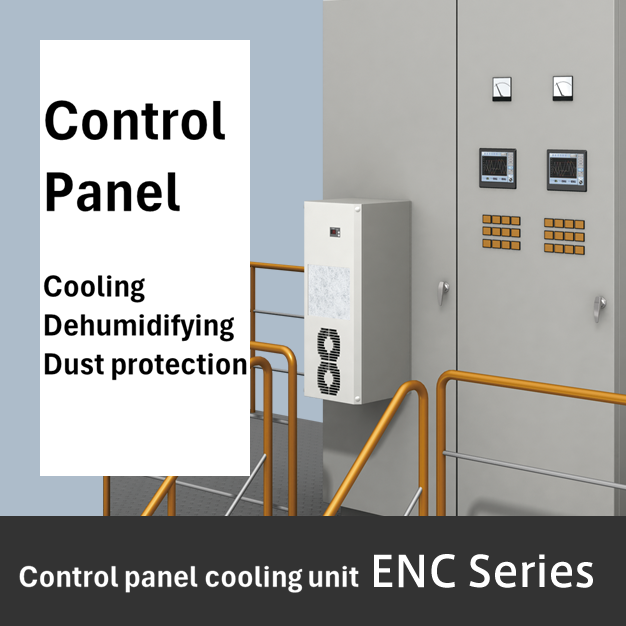When installing panel outdoors, it is more susceptible to heat from the surrounding area than when installed indoors. This article explains effective heat countermeasures for installing panel /cubicle outdoors.

Introducing heat problems in panel and key operational and energy-saving tips!
This book focuses on heat problems in panel, and provides information on the basics of heat problems, as well as a summary of some key points that can lead to efficient operation and energy conservation of panel.
Reduce heat load (heat intrusion)
Outdoors panel are more affected by direct sunlight (heat ingress) than by heat generated by the equipment in the panelboard.
When the temperature inside the panelboard rises, it not only affects the temperature life of the equipment, but also the deformation of the equipment and insulation, malfunction of breakers and other protection equipment, reduction in the percentage of load current value, fluctuations in current consumption and power consumption, and errors in the instrumentation.
Location
- Consider orienting the outdoor panel so that the front and back do not face direct sunlight on the south or west side, where solar heat is strong.
- Consider installing the unit near buildings, fences, or other structures that may cast shade.
- Choose a well-ventilated location.
- Avoid nearby places or objects that reflect light strongly.
Examples: window glass, metal housings such as stainless steel, and siding

Heat shielding measures
- Install the unit with a concrete foundation or other material to provide heat insulation from geothermal heat.
- Use an outdoor panel with a roof.
- Consider using eaves or under the eaves to avoid direct sunlight.
- Add a heat shield (double plate) to the light receiving surface (surface of the board).
*For details, please consult a specialized panel manufacturer.

Insulation method
- Add insulation to the light receiving surface inside the panel.
- Apply heat insulating paint to the surface of the board.
- Take measures to prevent glare from the ground.
*For details, please consult a specialized insulation material manufacturer.
Release heat from inside the panel
Since heat generation from inside the panel and heat intrusion from outside the panel are unavoidable, it is important to effectively dissipate the generated heat outside the panel.
Open the vent
- Open the ventilation holes for intake and exhaust.

Open the vent
- Install a ventilation fan.
- Install additional ventilation fans.
-Install a heat exchanger.
- Review the internal circulation system and ventilation method.
-Review the opening area.
*For details, please consult a specialized ventilation fan manufacturer.
Cooling the inside of the panel
- Install an outdoor type control panel cooling unit.
Apiste 's outdoor control panel cooling unit are made with an all-stainless steel body so that they can be used in wet and humid places, and the internal structure also uses a coating method for refrigerant piping that enhances rust prevention and saltwater resistance.
- When using outdoors, select cooler with sufficient cooling capacity.
We recommend an inverter-type panel cooler with cooling capacity one to two classes higher.
- A single control panel cooling unit has three functions: cooling, dehumidification, and dust prevention.
At Apiste, the standard is for panel temperature to reach 35°C.
Reference link → control panel cooling unit installation examples
Reference link → HFC alternative SUS body (outdoor specification)


Quick explanation: How to select products that will increase energy-saving effects
If you choose a type with a high cooling capacity relative to the heat load, the operating rate will be lower and power consumption will be reduced.
In particular, inverter types have a tremendous energy-saving effect when the thermal load rate is reduced by controlling the rotation speed.
(Reference: 64% decrease with ENC-GR1500L-SUS)







